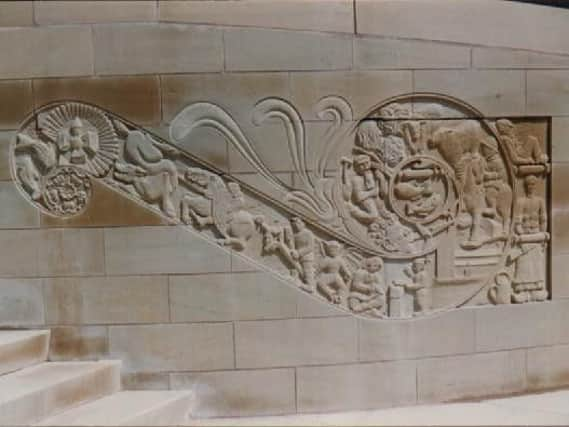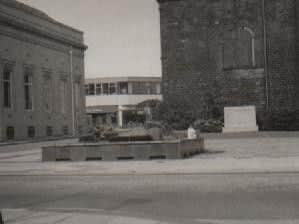Let's rejoice that we still have libraries


The landmark date, so far, in this story is July 3rd, 1930, when the Burnley Central Library was opened by the Earl of Elgin and Kincardine. There are a number of others which will be mentioned today.
The opening of 1930 was a great achievement for the Borough and Burnley Library was soon recognised as one of the best public libraries in the country. In 1949, for instance, there were 9,000 registered borrowers; 55,000 adult lending books; 10,600 books for juveniles; 10,000 reference books; 10,000 items in the Massey Music Library where there were also 1,500 records. In that year some 706,000 books and records were borrowed and the Reference Library was described as “much in advance of similar sections in many other Lancashire Public Libraries”.
Advertisement
Hide AdAdvertisement
Hide AdIn addition to all of this the Central Library provided space for a number of public lectures, art exhibitions of paintings and photography, trade exhibitions, musical events and a number of cultural societies used its premises. Of these, the services to commerce provided by the Technical Library, founded by Richard Caul, the Borough Librarian from 1946-74, should be picked out for special mention.


The Mechanics Institute, to some extent, had provided this service but, in the years immediately following the Second World War, the Central Library took on this role stocking numerous publications which were of use to Burnley’s industrial concerns. The Technical Library appealed to both the student and Burnley’s manufacturing industries.
I remember making use of Burnley Library’s vast collection of textile publications some of which went back to Victorian times. Particularly important to me were the Cotton and Textile Directories which contained information on the textile firms, not only of Burnley, but for businesses throughout the country.
But it was not only Burnley’s textile industry which was served by the Library. Burnley has long since been a centre of the engineering industry and it was catered for in much the same way in the Technical and Reference Libraries. The service, in fact, covered most of the manufacturing, distributive and service industries and was a great boon to local employers.
Advertisement
Hide AdAdvertisement
Hide AdOf course, the information contained in these publications is now available on the internet but I counted myself very fortunate to have access to Burnley Library when I was a student at Manchester and London Universities. Burnley even had almost all of the history books I needed and I often think that Burnley Library had just as important a share in my higher education as the universities that I attended.


By 1956 the Burnley Library Service was making great progress under Richard Caul. It was claimed that “the Library Service in Burnley is probably one of the finest in the country for a town of its size”. The Central Library dominated and the two branch libraries, the Marshall Library and the Colne Road Library, had been joined by a third at Rosegrove. There was a part-time branch library on Oxford Road and there were four service points at 323 Manchester Road, 147 Colne Road, 110 Lyndhurst Road and 200 Briercliffe Road. In addition, there was also a service provided at Moorfields, the former Workhouse but, by 1956, the General Hospital.
It was Burnley’s far-sighted policy to open libraries in all the various districts of the town. By 1961 the part-time libraries had been increased to two with the addition of another library on Mitella Street which replaced the service point at the Lyndhurst Road facility. The service points changed as well. There were only three in 1961 - 147 Colne Road closing and Lyndhurst being up-graded, but a new one had been opened on Cog Lane.
Burnley Council planned a new library for the Cog Lane area in the years just before Local Government Reorganisation which took place in 1974, but it was not until May, 1975, that the impressive Coal Clough Lane Library was opened. Richard Caul retired in 1974. He had planned even bigger improvements at the Central Library, in the 1950s and 1960s, but these were only partially fulfilled after the County Council became responsible for Burnley’s Libraries at the time of LGR.
Advertisement
Hide AdAdvertisement
Hide AdI suppose that another landmark date in the history of the Burnley Library Service is 1974 because that marks the year in which Burnley ceased to be a library authority. This status had been conferred on Burnley as, from 1888-9, it had been a County Borough providing the services to its citizens of both a County and those of a Borough. Libraries were the responsibility of Counties and this was one of the services, along with education, highways and social services, lost to Burnley at LGR.
However, the town became a District of the County Library Service and it took in County libraries in places near to Burnley, like the library in Padiham and the old library in Briercliffe. Since 1974 the service for the Borough of Burnley has also been provided in tandem with other Borough’s in North-East Lancashire but LCC has been responsible for another landmark change in the Burnley library service.
This was the re-modelling of Burnley Central Library, the scheme which had been mooted by Richard Caul but which, for a number of reasons, had not been delivered in his time. Though Raymond Pickles had been District Librarian since the retirement of Mr Caul, it was in John Hodgkinson’s time (he was appointed in September, 1991) that the work was undertaken.
This necessitated the closure of the Central Library and its temporary rehousing in Adlington House. Extensive works were carried out on the Grimshaw Street premises but the opportunity was missed to incorporate the former Aenon Baptist Chapel into the building. Access to the Central Library was improved by a disabled ramp which was decorated with a sculptured relief depicting the history of the town. Big changes were also made to the Children’s Library and the basement of the 1930 building was made into a combined Local History and Reference Library. The whole project was completed by December, 1994, at a cost to the County Council £1.7m and received three prestigious awards for their work.
Advertisement
Hide AdAdvertisement
Hide AdSince the year 2000 a number of other changes have taken place. Perhaps the most important of these, from the library-user’s point of view, has been the introduction of computers. These are now widely used in the smallest of branch libraries, not only in Burnley, but throughout the country. Computers have changed the library service everywhere, as has the introduction of e-books, but by far the greatest impact on the Library service has been the consequences of the financial crash of 2008.
A change of Government in 2010, and a reduction in central government funding for local government, has resulted in library services being disproportionately affected. There have been closures of library services in Burnley from the 1990s and these have speeded up since 2010. The Borough still has three main public libraries – the Central and Coal Clough Libraries, in Burnley, and Padiham Library, which is located in the Town Hall. However, Burnley’s commendable policy of providing library services in each of its localities no longer survives.
It is difficult to blame anyone other than Central Government, though I suppose that the bankers who had a hand in the Crash of 2008 should share it. What has been difficult to take, for those of us who love libraries, is that they, to a greater extent than should have been the case, have paid the price for what amounts to the greed of those who should have known better and who have adversely affected many lives without suffering much of an effect on their own.
On the other hand we still have some libraries. Let’s rejoice in that!